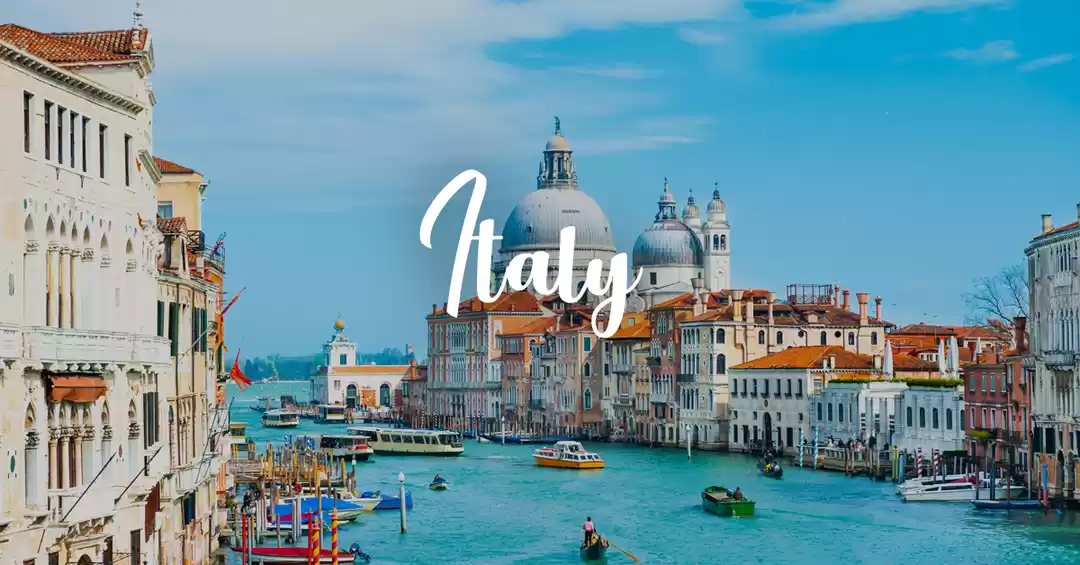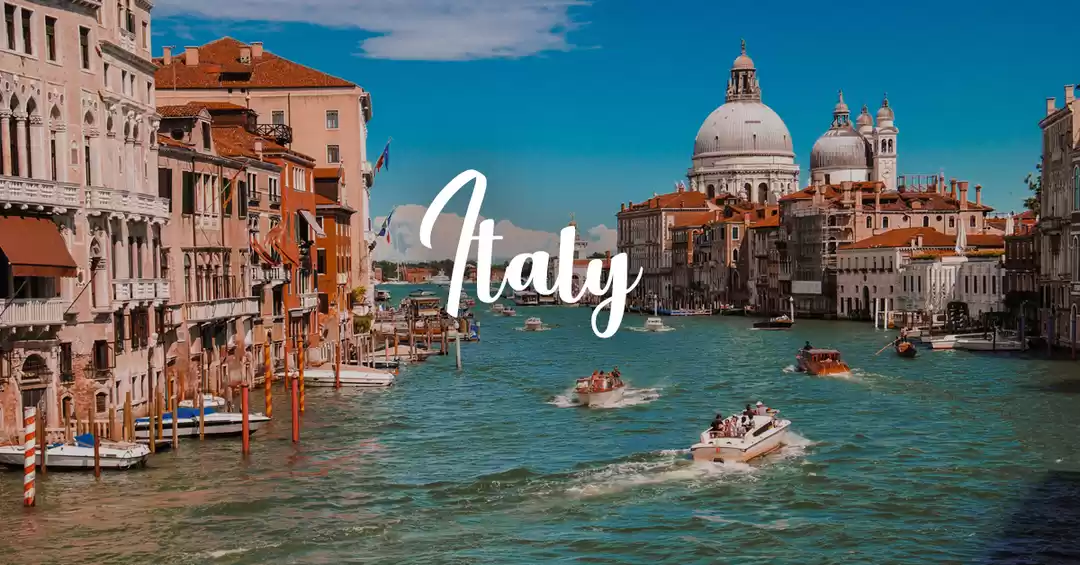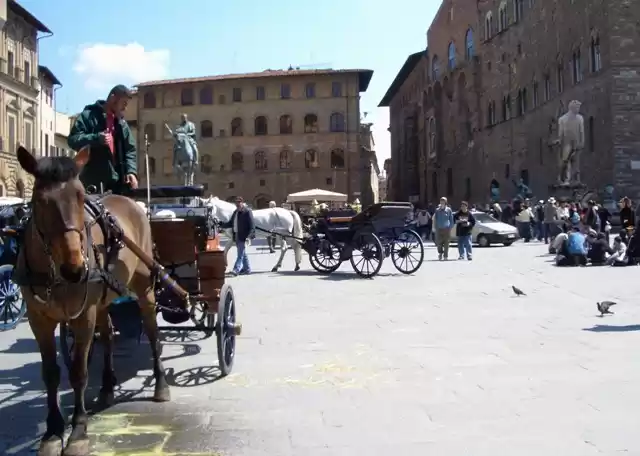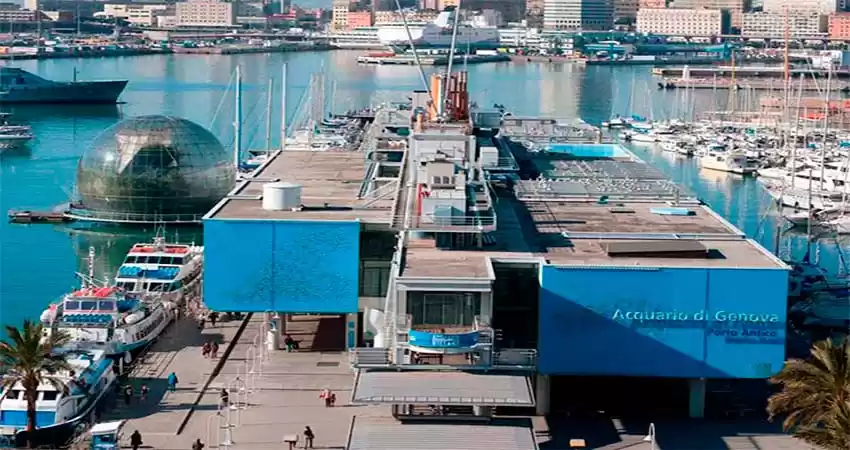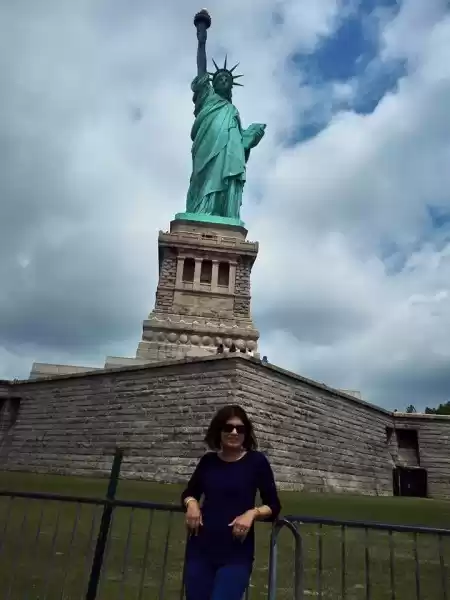
Today it was time to say goodbye to La Spezia to go to the Ligurian capital of Genoa in Italy. As a curiosity, apart from the rich history that Genova had, the invention of cowboys is attributed to it. Apparently the word jeans to indicate the famous fabric, originated here around the year 1500.
With the name Blue De Genes and the distortion to English blue jeans, indicated a type of blue fabric very resistant to the weather. It was perfect for the sailors of Liguria, and was used for candles and to cover merchandise. It was manufactured in the French city Nimes, from which originates the word denim.
Day 1
About 9:30 am we we gave the keys to the apartment to the landlady. We had breakfast for the last time in the cafe and we headed to the train station. We had taken the ticket online with what we saved something in the rate with respect to take it out at the time.
A lady announced by public address that the train from Roma Termini to Genoa will arrive 20 minutes late. So we have to wait more on the platform, where we entertain ourselves watching the movement of passengers. There are enough tourists equipped to visit, probably, the cinque terre. We see a group of pigeons that flutter on the tracks trapping small pieces of biscuit that a man has purposely crumbled for them.
We ride on the float, as the Italians call the wagon, and we settle on the left side to go to the sea. The journey lasted an hour crossing the villages that we already knew in addition to Sestri Levante, or Deiva Marina among others. Through the window we could see the calm sea, with people bathing and the sunny day.
We got off at the Brignole station and, in 10 minutes we arrived at the hotel. Thanks to a rewards promotion we got a good price for this hotel in Genoa that was in a quiet place and at the same time close to the center. It is on the Via Corsica, in a residential neighborhood, located on a street that looked more like a Parisian boulevard. It is very different from the characteristic Genoa caruggi or alleyways.
After check-in they gave us a genoa map and, after leaving the luggage in the room, we went out to wander around. We found the layout of the streets marked on the map with black arrows indicating the different heights that exist. Genoa is built on levels. It has been growing around its great port in a disorderly way and adapting to the irregular orography that surrounds it, towards the hills.
From Via Corsica we went to the Dante square. After going down some stairs we found an enclosure full of motorcycles. There are many throughout the city. In the background stand out the two towers of Walls of Genoa that was once the main gateway to Genoa. It is one of the medieval works that are preserved, very close to the central Piazza De Ferrari. Just next door is the house museum of Christopher Columbus, whom the Genoese consider their countryman. Although his origin is not very clear, as it is disputed between Spaniards, Portuguese and Italians.
The house can be visited but we only see it from the outside and we stop at the remains of the Cloister of Saint Andrea. Here only part of the arches of the cloister remains. These were absorbed, like the towers of the door, by the subsequent development of homes in the area.
From there we go to Piazza De Ferrari, where we find an open space with a huge fountain in the center which is a meeting place for young people. At the beginning of the nineties the area was rehabilitated and paved for the celebration of the V centenary of the discovery of America.
At one end we find the Ducal Palace, one of the main historical buildings. Inside, we can find different exhibitions and activities used as a cultural center. The lunch hour was approaching and we headed to the Vico Superiore del Ferro, where I had located a restaurant that was not far from the square. We moved between the alleys and soon found a kind of tavern where they serve typical dishes and others. The place is decorated and they have used the chopping boards of the butchers in the tables.
We take a dish of the day to choose among several, water or glass of wine and a coffee. With caffeine in the body we go uphill to the Spianata Castelletto, after climbing a lot of stairs. It is a panoramic point, an esplanade from where we get a view over the roofs of the city, with the port, the sea and the lantern or lighthouse in the background. We sat for a while in the shade while we observed the houses crowded with manifest disorder that, in surface, formed a labyrinth of narrow alleys.
We resume the march in search of the D'Albertis Castle that hosts the museum of the cultures of the world. It was built on a fortification of the sixteenth century by Captain Enrico D'Albertis. He donated it himself to the city along with all the ethnographic, nautical and archaeological material he had collected during his travels around the world. Access to the gardens is free so we decided to go and see them.
After resting for a while in the area we went down to the center making a stop at the botanical garden near the university. Here they have some greenhouses and plants with their names on posters.
We continue with the descent until we find ourselves side by side with the Basilica della Santissima Annunziata del Vastato. We found it quite ugly on its side facade.
We entered to see it. Its interior completely erased the first impression after discovering the artistic splendor of the Genoese baroque. The church dominates in an imposing way on the Piazza della Nunziata. The ambitious project that entailed its expansion and maintenance was partly financed thanks to the families of Genoese noblemen. We sat for a while looking at the paintings on the ceiling, the solomonic columns and the ornate decoration of his style.
On leaving, we headed for the Via Balbi, which comprises the junction of the square where we were with the Piazza Acquaverde. Here the other great Genoese railway station is located, that of Principe.
Via Balbi was built in the early six hundred by a member of the Balbi family, rich Genoese bankers. Here we find a good number of prestigious palaces, many of them inscribed in the Genoese rolli and declared a World Heritage Site by Unesco. The street is the seat of the university specializing in Law, Political Science and Philosophy. The university library is also present, a building of the six hundred that belonged to the Jesuits.
We went first to the Palazzo Reale, from which we saw only the gardens with free access. At the entrance there is an exposed carriage and, on the other side, the sculpture of a huge foot. In the background a garden opens with a fountain where a child, accompanied by his grandfather, spills coca-cola in the pond because he says that the fish like soda.
The university is not very busy but what we do see is a large number of announcements in a bulletin board regarding the search and offer of accommodation during the course. We left via Balbi, after having seen its palaces with decorated facades we went down the alleys to the port. There we ran into the Chiesa e Commenda di San Giovanni di Pre.
It is a monastic complex consisting of two Romanesque churches and a three-story building, the commenda. It has undergone numerous restorations and is located in Via Pre, one of the oldest streets in Genoa. In this area we can breathe the atmosphere of what port cities were in the past. There are people from different parts of the world, small workshops, typical buildings with painted facades and narrow alleys.
We soon go to the promenade located in the Old Port, which for several years has been converted into a cultural, tourist and service center. It was renovated on the occasion of the 500th centenary celebration of the discovery of America in 1992. We first see the Galata Museo del Mare.
It is the largest maritime museum in the Mediterranean where boats, armory of the dock, atlases and fishing objects among others are conserved. There is also a room dedicated to emigration.
Very close we came across the boat that Roman Polanski used to shoot his movie Piratas and it is a museum that can be visited. Around we met a lot of people selling handbags on the sidewalk that mimic the most exclusive brands and models.
We leave the ship behind and see the entrance to the Genoa Aquarium, the second largest in Europe after Valencia. As we knew this one and in March we visited several in the Emirates, we did not enter to see it either.
Another of the main buildings of the old port, is the Bigo, a panoramic elevator that turns on itself. It was built for the cargo cranes that were in charge of lowering the merchandise that arrived at the port. The structure rises allowing to see a view of the city and the rest of the port.
We continue with the walk along the pier and we find the Bolla, a kind of glass and steel sphere inside which live exotic plants, reptiles, insects and some birds. We approach to see the interior and we can only distinguish between the plants an orange bird.
Both the sphere and Il Bigo were designed by Renzo Piano, well-known Italian architect, in charge of remodeling this area of the port. After resting for a while in the port, watching the people on a sunny afternoon, we approach a market where they sold all kinds of food under the painted facades that once had to look splendid.
Strolling we arrive at the San Lorenzo Cathedral, in the square of the same name. It is a medieval church on which later additions were made. The initial project included two towers but, as it happens in other places, only the right was finished housing the only bell tower of the temple.
The decoration with black and white strips of the facade was a symbol of nobility typically used in Genoa. As a symbol of the struggle of Christ against evil, two lions appear on the sides, with a curious sad expression on their faces.
We took the opportunity to take a refreshing gelato sitting on the steps of the cathedral watching the incessant movement of people from one side of the square to the other. Nearby is the Chiesa del Gesu e dei Santi Ambrogio e Andrea. We went to see the interior, where we discovered a lot of paintings.
Upon leaving, we decided to end the day by going to the hotel. We take advantage of the fact that it has a small wellness area with spa, which is comforting after the intense day in Genoa. We dined at the hotel restaurant because they offered us with a voucher to use in bars and restaurants. We took advantage of it, although there are numerous options outside. We have an aperitif and dinner with the pinchos and a rich pizza.

Day 2
Our second day in Genoa dawned clear, with splendid sunshine and pleasant temperature. After breakfast at the hotel we stopped at the first kiosk that we saw to buy tickets for the urban bus. As we had planned to make several trips, we opted for a one day ticket and allows unlimited use of the bus for 24 hours.
We went to the Via XX Settembre. In front of the eastern market, we took bus to Prato. Our goal was to visit one of the most outstanding cemeteries in Europe. It is famous for hosting an important collection of funeral sculpture and having outstanding figures such as the wife of Oscar Wilde or Giuseppe Mazzini.
Although cemetery tourism may sound a little strange, it is well worth a visit, because it is an authentic open-air museum. The extension is considerable and we spent three hours traveling it and they flew by us.
The monumental cemetery of Staglieno is for the Genoese people a place of remembrance and commemoration. It also represents a fascinating artistic and historical testimony of the city of Genoa. The municipal administration, aware of the cultural importance has, has undertaken initiatives aimed at the restoration and enhancement of the numerous works that have made this cemetery famous. In one of the main doors is the statue of the Faith, a work in white marble of 9 meters high, made by the sculptor Santo Varni.
We got off next to the flower stalls and, at the entrance, a man came to offer us a plan of the whole. Later another one appeared offering its services like guide but we decided to make the visit by free.
We started with the less monumental part, and already here the decoration of the tombs seemed surprising to us. We move between sculptures and niches and soon we cross an aqueduct leading to the part of the English cemetery. Two sculptures of a perfectly dressed couple draw our attention in the middle of a forest of trees.
A little further up were the tombs of the Orthodox. This cemetery welcomes people from different confessions, reflecting the cosmopolitan character that Genoa has always had. The Lutheran tombs looked more austere and those of the Jews wore their symbols such as the Star of David and the 7-branched candelabrum, along with the name of the deceased written in Hebrew and Italian.
We had climbed stairs and, from the top we saw the central temple. We accessed without ceasing to surprise us with all the sculptures that are there. Here the dust has accumulated over the years and where silence reigned, only disturbed by the curious steps of some visitors. In the interior of this pantheon the remains of illustrious citizens are conserved.
Along the perimeter walls extend the galleries, authentic chests of sculptural works. There are several thematic itineraries such as the Risorgimento, the Angels, the Charity and Charity and the Emotions. We began to walk the galleries to the west and up, below and at the top. The themes of charity are represented by female figures.
As for the emotions, in Staglieno art and nature merge, creating an alliance of exclusive beauty in a context of thick vegetation. In the Ammirato tomb the dramatization is exalted, which prevails over the melancholy, evidenced by the singular pose of the young woman, with her head tilted, letting her hair fall.
Empress Sissi, visiting the Staglieno Cemetery in March 1893, stopped for a long time before the monument to Giacomo Carpaneto. It is a notable work of Scanzi. This tomb was commissioned by Francesco Oneto, a wealthy merchant and president of Banca Generale. The angel who holds the trumpet of universal judgment with his right hand, offers no gesture of consolation, for he seems distant and imperturbable.
The sensuality of this statue profoundly shocked the contemporaries, but it enjoyed great success as it was repeated countless times, both by Giulio Monteverde himself, the author of the work, and by the imitators of the artist. It can be found in several versions in many cemeteries in Italy, France, Germany or England.
In the Erba edition of the Genoese sculptor Saint Saccomanno, the female figure sitting on the tomb with her eyes closed and holding the poppy seeds in her hands, the pagan symbol of eternal oblivion, also shocked her contemporaries, partly because the sensuality that emanates from the naked shoulder of the woman.
From 1860 Realism had a rapid diffusion in Staglieno that can be seen in the representation of human figures and their surroundings, treated with great precision and attention to detail. The expressions of pain are recreated, the gestures of the hands, the dresses and the hair seem tremendously real. In the Pignone tomb, by sculptor Giuseppe Benetti, a representation of death appears on its own. The young wife discovers the veil, a symbol of long illness, which covers her late husband, rich businessman, owner of a large shipping company.
In the tomb of Rivara, by Giovanni Battista Villa, the brother, the sister-in-law and the nephew are represented. The sculptor captured his clothes with maximum detail, as can be seen in the boy's shoes or corduroy trousers. It also represents on their faces their state of mind and the wedge of the stylistic precepts of bourgeois realism.
The tomb of Caterina Campodonico, the walnut seller, may be the best known monument in the cemetery. This woman saved all her life to make a sculpture in Staglieno and is represented with the necklace of nuts in his hands and a thread of bread. Caterina managed to get Lorenzo Orengo, a sculptor of the Genoese bourgeoisie, to make this sculpture for her.
At times, the sculptures take on a more macabre tint and we cross corridors with a ghostly atmosphere, with the cobwebs hanging from the ceiling, the walls with humidity and a sepulchral silence, perfect props for a horror movie.
After the long walk through the cemetery and, overwhelmed by the amount of sculptures we have seen and those that have yet to be discovered, we take the bus to the center of Genoa. We eat again in Taggiou and after resting for a while we go to Via Garibaldi, very close to there. In this street there are several mansions and manor houses.
Formerly known as Strada Nuova, Via Garibaldi is one of the most visited places in the city, as it contains that representative set of the commercial society of the sixteenth century. The numerous works of Renaissance architecture are surprising, with sculpted facades, stuccoed and medallions.
Along the street are lined buildings with atriums, steps, patios, rooms with frescoes and hanging gardens. Here we find outstanding art galleries such as the Red Palace, the White Palace and the Spinola Palace.
We leave via Garibaldi walking through the Caruggi, the narrow alleys that lead to the port. We cross the Via de la Maddalena, a curious street that the Genoese do not frequent at night or during the day.
We arrived to the cathedral and took the opportunity to visit the interior, since the previous day we found it closed. In the Dante square, right next to the house of Columbus, we took the bus to Boccadasse, the fishermen's neighborhood a short distance from the center. In 25 minutes we got out and saw the silhouetted silhouette of the coast with a group of houses near the sea.
From the church we go to a pretty busy square. There are people walking, fishing, taking a gelato in front of the sea or enjoying the afternoon in this quiet place. Boccadasse is a small neighborhood that opens around a small port and a pebble beach. There are people lying down and others bathing, because of the temperature.



